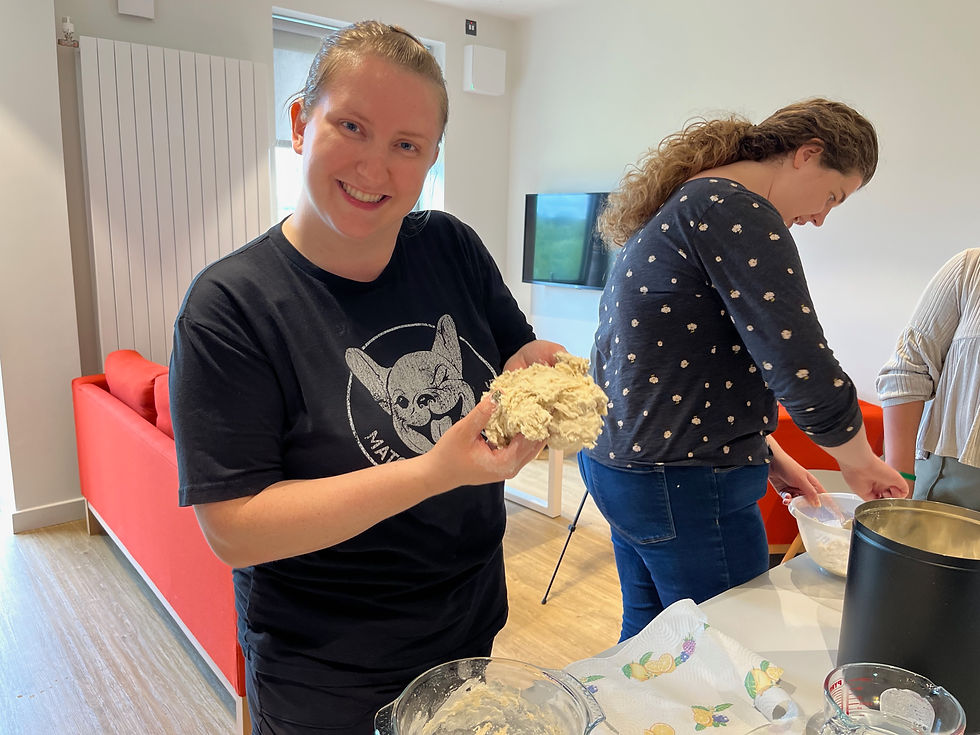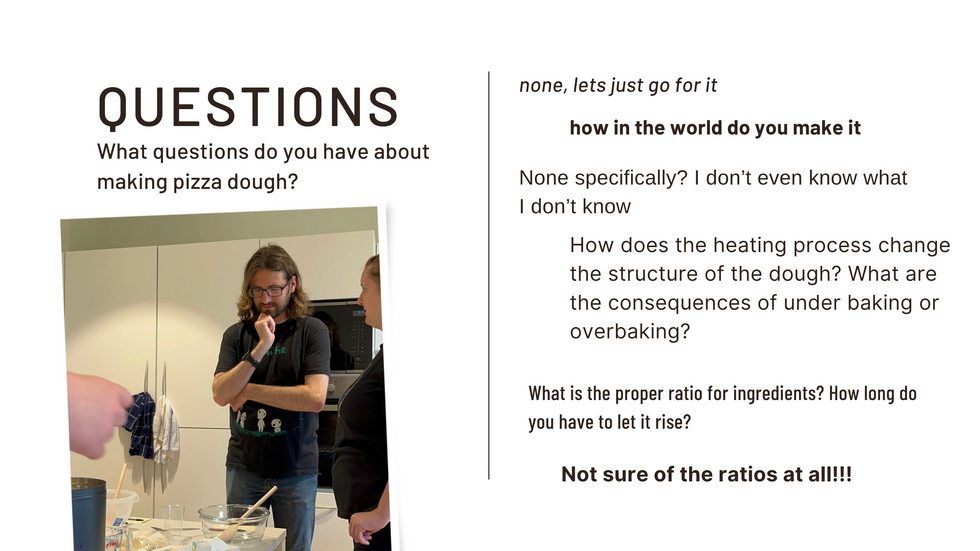Maker learning hits the spot
- Colleen Farris
- Jul 24, 2024
- 4 min read
Updated: Oct 13
Pizza without a recipe

Testing a recipe for success
If you read my previous two blog posts, Ten Dollar Words and Interrogating Teaching Practice, you know that I have been doing some heavy theoretical lifting and introspection to learn how to “do better” in my teaching practice. Put all those tools and insights together, and you have a recipe for great teaching and learning. Want a taste? Keep reading.
My Why
My goal is to improve student knowledge transfer by doing a better job of detecting students’ contexts, addressing misconceptions, and creating a learning environment in which students integrate knowledge into their practice, and are able to transfer that knowledge to apply it in new situations (Bransford, 2008). I decided on this goal after going through Warren Berger’s three-question Why, What if, How inquiry cycle (Berger, 2024). You may read more about this process in my Interrogating Teaching Practice blog post.
What if questions are the answer to better knowledge transfer?
Warren Berger's discussion of the power of questions not only challenged me to improve learning transfer outcomes, it also convinced me that the best way to engage students in learning is by provoking them to ask their own questions, then giving them a chance to discover the answers. Since ownership of a question fosters much deeper investment in and motivation to learn, I decided my prototype lesson had to embody this principle.
Lesson design
The original inspiration for this lesson came from Michael Ruhlman's cookbook entitled, Ratio: The Simple Codes Behind the Craft of Everyday Cooking. In it, he elegantly explains that it is the proportional relationship between ingredients that matters in most recipes, not the exact measurements. Ratio recipes give cooks the freedom not only to increase or decrease yields, but also to create new recipes.
In Invent to Learn, Martinez and Stager argue that tinkering and making are essential to learning because they provide students with the experience needed for knowledge formation (2019). Recipes are developed by tinkering with ingredients and the relationships between them. Such tinkering starts with a question, "How much of each ingredient is needed to yield the desired result?" Ratio recipes can be discovered by tinkering with ingredients until a satisfactory result is achieved. They provide a great way to introduce question-inspired learner engagement and knowledge-building experience.
Furthermore, a cook who uses ratios does not need a traditional recipe. This idea challenges the common misperceptions that cooking is hard, complicated, and only for experts. Since challenging and replacing misconceptions is one of my goals, a lesson based on ratios is a perfect choice.
I selected pizza dough after considering several different ways to structure my lesson. Every student has knowledge about pizza upon which to draw (or will have after tasting a sample and interacting with pre-made dough). Follow-up lessons will reveal the uniqueness of student contexts by allowing them to make personally relevant flour- and water-based recipes using a similar approach. Inquiry-based labs using more ingredients and more complicated assembly methods will be introduced as students' knowledge, skills, and confidence increase.
How making makes learning stick
Knowledge transfer can be thought of as sticky learning. Learning that replaces prior misconceptions in thought and action, and that is associated with questions that arise within the learner, does not dissipate as soon as a test is completed (Bransford, 2000). It sticks around to be used again later. The following prototype lesson integrates all these factors to achieve effective learning transfer.
Prototype Lesson Overview
Lesson Description: In this lesson, students make pizza dough without a recipe. This activity accesses students’ prior knowledge of pizza and reveals misconceptions about baking ingredients and their functions. It also introduces students to the concept of ratio-based recipes by allowing them to experiment/propose/discover a ratio recipe themselves through tinkering.
Maker Product: Students make pizza dough and record the amounts they use of each ingredient on a graphic organizer and present their ratio recipe along with their finished pizza.
Pre- and Post-Assessments: Prior to the lesson, students complete a pre-assessment Google Form to measure confidence and prior knowledge. Students taste and evaluate their baked pizzas, then complete a self-evaluation of their post-lesson confidence and learning, and an evaluation of their favorite ratio recipe pizza in a post-assessment Google Form.
Materials: Graphic Organizer and Lesson Plan
Outcomes
The results of the prototype lesson were extremely positive. Participants began the activity with questions, little background knowledge, and relatively low confidence in their pizza making skills. Data collected through the pre- and post-assessment Google Forms revealed remarkable growth in participants' knowledge and confidence. Motivation, ingredient and recipe knowledge all increased.
Feedback regarding the activity itself also was positive. The lesson plan has been revised to add tasting and evaluation of each batch of pizza, as suggested in the feedback from the prototype lesson.
Conclusion
I am convinced by the results of the prototype lesson that leading with questions, accessing prior knowledge, building lessons on student inquiry, and rendering knowledge visible through making is an effective approach to achieving my goal of improved student knowledge transfer. As can be seen by comparing the pre- and post-assessment data in the gallery below, discovering knowledge through making yields dramatic increases in knowledge, confidence, and motivation in learners. It is a recipe for learning that hits the spot!
This gallery presents the findings of the prototype lesson in graphic form.
Lesson Prototype Presentation and Artifacts
This "Maker learning hits the spot" video includes videos from the prototype lesson, as well as artifacts from the pre- and post-assessments of prototype participants.
References
Berger, W. (2024). A more beautiful question: The power of inquiry to spark breakthrough ideas. Bloomsbury.
JoyFoodSunshine. (2024, July 10). Easy, delicious, family-friendly recipes! https://joyfoodsunshine.com/
Martinez, S. L., & Stager, G. (2019). Invent to learn: Making, tinkering, and engineering in the classroom. Constructing Modern Knowledge Press.
National Academy of Sciences - National Research Council, W. D. C. on B. and S. S. and E., Bransford, J. D., Brown, A. L., & Cocking, R. R. (2000). How People Learn: Brain, Mind, Experience, and School. Expanded Edition. https://ezproxy.msu.edu/login?url=https://search.ebscohost.com/login.aspx?direct=true&db=eric&AN=ED481522&site=eds-live&authtype=ip,guest&custid=s8364774&groupid=main&profile=eds.
Ruhlman, M. (2010a). Ratio: The simple codes behind the craft of everyday cooking. Scribner.














